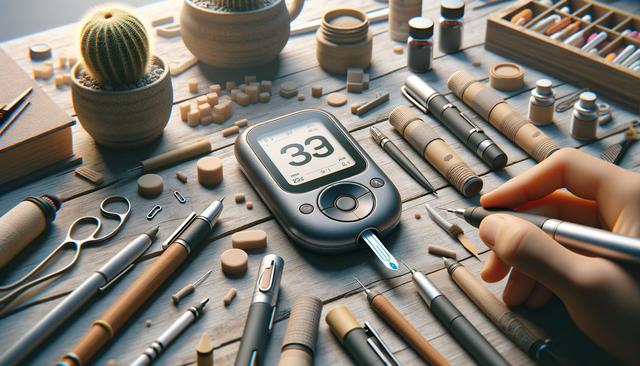Understanding Needleless Glucose Monitoring
For individuals living with diabetes, frequent blood glucose testing is an essential part of managing their health. Traditionally, this has involved finger pricks or the use of sensors inserted under the skin. However, needleless glucose monitoring is changing this experience by offering non-invasive ways to track glucose levels. These devices use alternative technologies such as electromagnetic sensing, optical measurements, or interstitial fluid detection to assess blood sugar without breaking the skin.
The goal of needleless glucose monitors is to reduce the discomfort and inconvenience of traditional methods. Many people find finger pricking painful or difficult to maintain regularly. A needleless solution not only increases comfort but also encourages more frequent monitoring, which can lead to better long-term health outcomes.
How It Works: Technology Behind the Innovation
Needleless glucose monitors rely on advanced technologies to provide accurate readings. Some of the most promising methods being explored and implemented include:
- Optical sensors that measure glucose levels through the skin using infrared light or Raman spectroscopy.
- Electromagnetic sensors that detect changes in glucose concentration by analyzing dielectric properties of tissues.
- Sweat and saliva-based sensors that identify glucose levels through biochemical analysis of body fluids.
Each of these approaches aims to deliver real-time, continuous glucose data without the need for skin puncture. While some systems are still under development or in clinical trials, others have already reached the market and are being adopted by individuals seeking more convenient diabetes care solutions.
Benefits of Going Needle-Free
Switching to a needleless glucose monitor offers several advantages beyond just eliminating finger pricks. These benefits can have a positive impact on both physical health and overall quality of life:
- Improved adherence to monitoring routines due to reduced discomfort.
- Lower risk of infection or skin irritation from repeated needle use.
- Discreet and easy monitoring in public or professional settings.
- More consistent data tracking, which supports better treatment adjustments.
Moreover, needleless monitoring can be especially helpful for children, elderly patients, and individuals with a fear of needles. The psychological relief from avoiding daily pricks should not be underestimated, as it plays a crucial role in encouraging ongoing disease management.
Challenges and Considerations
Despite its potential, needleless glucose monitoring is not without challenges. Accuracy is a key concern, as non-invasive methods must match the reliability of traditional blood-based tests. Environmental factors such as temperature, humidity, and skin characteristics can affect sensor performance. Additionally, cost and insurance coverage may limit access for some users.
Before choosing a needleless glucose monitor, individuals should consult with healthcare providers to determine if it suits their medical needs. Some devices may be better suited for specific types of diabetes or patient lifestyles. It’s also important to consider:
- Device calibration requirements.
- Response time for glucose changes.
- Integration with mobile apps or other health monitoring platforms.
- Battery life and maintenance needs.
Understanding these factors can help users select a product that aligns with their personal health goals and day-to-day routines.
What the Future Holds
As technology continues to evolve, the future of needleless glucose monitoring looks promising. Research and development efforts are focused on enhancing sensor accuracy, expanding detection methods, and integrating artificial intelligence for predictive glucose trend analysis. These innovations are expected to make needle-free monitoring more accessible, affordable, and user-friendly in the coming years.
In addition, the broader health tech ecosystem is beginning to embrace needleless solutions as part of a holistic approach to chronic disease management. Wearable devices, smartwatches, and connected health platforms are increasingly being designed to work in harmony with glucose monitoring systems, offering users a more comprehensive view of their health metrics.
With increased investment and consumer demand, needleless glucose monitors are likely to become a regular option in diabetes care, helping more people manage their condition with less stress and greater efficiency.
Conclusion: A Step Toward Better Diabetes Management
Needleless glucose monitors represent a significant step forward in diabetes care, offering a more comfortable and user-friendly way to track blood sugar levels. While not without limitations, their growing availability and technological sophistication make them an appealing option for many individuals. For those seeking a less invasive, more convenient monitoring method, exploring needleless alternatives could be a worthwhile decision in consultation with healthcare professionals.


